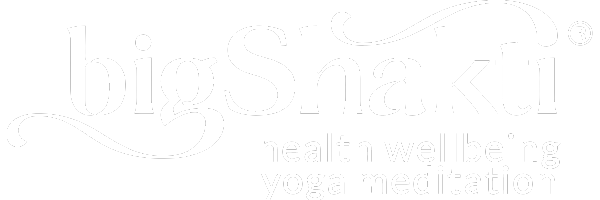Yoga of Mental Health Workshops → More Info
Yoga-Tantra Techniques: From Conscious to Unconscious Mind Control

Yoga-tantra offers a rich tapestry of techniques to facilitate relaxation, enhance concentration, and access deeper meditative states.
There are hundreds of different practices within the multiple yoga-tantra tradition designed to accommodate our diverse needs. Yoga-tantra recognizes that we all have different temperaments, varying levels of experience, and unique stages in our mental and spiritual evolution.
The beauty of this approach lies in its flexibility and adaptability, ensuring a suitable path for everyone seeking inner peace and self-realization.
Knowing how to choose the technique that suits us best requires either a teacher who can guide us or careful experimentation. Finding the techniques that are best for us takes time, which is why we wrote the article on the Meditation Success Path—From Self-awareness to Self-Mastery.
The Importance of Personalization
It's crucial to understand that there is no one-size-fits-all approach in yoga-tantra. Instead, techniques should be tailored to suit each individual's specific needs, current capabilities, and personal goals. Personalization, finding what works best for us, is crucial if the practice is to be effective, ensuring our progress.
We all have different needs.
Some people seek to manage their conscious mind to reduce excessive thinking, emotional imbalance, and overwhelming feelings. Others might be more interested in exploring the deeper recesses of their minds, building mental and emotional strength and resilience, or awakening unconscious parts of their personality. For others, their goal is purely spiritual liberation. The choice of technique you make depends on your needs and goals. Hopefully, your goals and needs are in synch.
For instance, mantra japa meditations are often used to quieten the mind, making them particularly useful for those seeking to manage conscious thoughts. On the other hand, techniques like Ajapa Japa can influence both the conscious and unconscious minds, making them suitable for those looking to delve deeper into their psyche.
The Journey Begins: Controlling the Conscious Mind
The first step on this journey for all aspirants is relaxation. This initial phase is crucial for recouping energy and managing the adverse effects of stress. Relaxation techniques are especially useful for managing the more conscious layers of our personality, including our thoughts and emotions.
When we can relax and put the surface-level, more egoic, thinking parts of the mind into relative order, we create space to dive into the depths of our being. Relaxation creates the correct conditions for connecting with our unconscious thoughts and other mental patterns at the subconscious and unconscious levels.
Mantra Japa: A Gateway to Mental Control
Mantra repetition, or japa, is incredibly effective in controlling conscious mental patterns. This practice involves repeating a sacred sound, word, or phrase aloud or silently. The rhythmic repetition of the mantra helps to focus the mind, reducing the chaotic flow of thoughts and promoting a sense of calm and centeredness.
While japa can eventually lead to deep concentration and authentic meditation experiences, it's important to note that this is a relatively slow path. For those seeking faster and more effective results, practices like Ajapa Japa, which incorporates other forms of meditation into one powerful technique, can be more beneficial.
As Mahatma Gandhi wisely noted, "When the name is uttered from the mouth, it is called japa; when it is uttered from the heart, it is called ajapa." This statement beautifully captures the progression from a conscious effort to effortless integration into our meditation practice.
Other Techniques for Conscious Mind Control
In addition to mantra japa, several other methods can be employed to control conscious mental patterns:
- Breath Awareness involves focusing our attention on the natural rhythm of the breath, observing its flow without attempting to change it. This simple yet profound practice can quickly bring the mind to the present moment, reducing anxiety and promoting relaxation.
- Pranayama are specific breathing exercises that go beyond mere awareness. Pranayama techniques involve controlling the breath in various ways to influence the flow of prana (life force) in the body. These practices can have powerful effects on both the body and mind.
- Visualization Techniques involve creating and focusing on mental images, which effectively direct our attention and energy and promote relaxation and concentration.
- Yoga Nidra: This is a powerful technique of conscious relaxation, also known as yogic sleep. It involves systematically relaxing different parts of the body while maintaining awareness, leading to a state of deep relaxation without losing consciousness.
Once we have learned and practiced relaxation techniques, we can move on to concentration meditation practices. These more advanced practices offer greater control over the brain and mind, potentially transforming our personality at all levels.
Advancing to the Unconscious: Controlling Deeper Mental Layers
While many students find that controlling conscious impulses meets their needs, others feel drawn to progress further on the path. For these individuals, yoga-tantra offers advanced methods that lead to the control of unconscious energies and impulses.
Advanced Techniques for Subconscious Control
Some of the advanced yogic methods that control subconscious impulses include:
- Deep Meditation Practices (Dhyana) involve sustained concentration, leading to a state of absorbed awareness. In this state, we experience a dissolution of the sense of separate self, accessing deeper layers of consciousness.
- Kriya Yoga Practices are a set of energization, breathing, and meditation techniques. Ajapa Japa is a form of Kriya Yoga.
- Chakra and Kundalini Meditations work with the body's subtle energy system, aiming to awaken and balance the chakras (energy centers) and stimulate the rise of kundalini energy. Ajapa Japa is an important part of these systems.
- Deep Self-Inquiry Techniques involve questioning the nature of the self and reality, leading to profound insights and transformations.
The primary goal of these yogic concentration meditations is to master the mind and its associated brain waves. As we master the techniques, these more powerful and spiritualized thought waves can permeate all aspects of our personality, from the conscious to the subconscious and unconscious.
Ajapa Japa: The Bridge Between Conscious and Unconscious
As we advance in our practice, we may transition to Ajapa Japa. The word ajapa means effortless, spontaneous repetition. Japa is conscious repetition. In Ajapa Japa, we chant the mantra mentally while simultaneously tuning into the mantra inherent in the breath. The mental repetition enables us to tune into the deeper layers of our being where mantras, proto-thoughts, reside in archetypal form. This practice represents a significant milestone in the journey of mental mastery.
In the state of Ajapa, which arises from the practice of Ajapa Japa, the mantra becomes so deeply ingrained that it continues spontaneously, even without conscious effort. This represents a deeper level of self-awareness arising from the conscious connection with the deeper psyche. Ajapa Japa enables us to forge a bridge between the conscious and unconscious realms of thought.
The transition from Japa (conscious repetition) to Ajapa Japa (effortless repetition) is part of your spiritual where you gain personal power. You move from controlling conscious thoughts to influencing unconscious patterns. It demonstrates the shift from active effort to effortless mastery characteristic of advanced spiritual practice.
The Practice of Ajapa Japa
Ajapa Japa typically involves the following elements:
- Breath Awareness: Be aware of your breath and practice ujjayi pranayama.
- Mantra Synchronization: Repeat the mantra SO HM mentally in sync with the breath. SO is chanted mentally during inhalation and HM mentally during exhalation.
- Energy Visualization: Visualize the breath and mantra moving along a psychic passage, either in the nose, along the front of the body, or in the spinal cord.
- Gradual Internalization: As the practice deepens, the conscious repetition of the mantra becomes more subtle and eventually effortless.
- Expanded Awareness: In advanced stages, we experience expanded awareness that includes both the spontaneous mantra repetition and the surrounding silence.
The Gradual Progression of Practice
The Meditation Success Path takes you on a graduated journey from controlling conscious thoughts to influencing subconscious and unconscious patterns. It requires consistent practice and patience. By initially targeting the conscious layers of thought, you create the conditions to address deeper, unconscious impulses by steadily quieting the surface-level mental chatter.
This gradual progression is essential, as attempting to control unconscious thoughts without first mastering conscious ones is counterproductive. It's like trying to clean the depths of a pond without first clearing the surface debris – it's not only ineffective but can also stir up more turbulence.
The Power and Benefits of Consistent Practice
The key to progress in yoga-tantra practices lies in consistency. Regular practice, even for short periods, is more beneficial than sporadic longer sessions. This consistency allows the effects of the practice to accumulate over time, gradually reshaping our mental landscape.
As you progress, you may notice subtle changes in your day-to-day life. These might include:
- Increased ability to remain calm in stressful situations
- Greater clarity of thought and decision-making
- Improved emotional regulation
- Enhanced intuition and creativity
- A deeper sense of connection to oneself and others
- Increased awareness of subtle mental and emotional states
In the words of Patanjali's Yoga Sutras, "Practice becomes firmly grounded when consistently attended to for a long time, without break and in all earnestness." As we commit to this journey of self-discovery and transformation, we open ourselves to the profound wisdom and peace that lies within.
Categories
- Yoga Therapy (59)
- Meditation (33)
- Yoga Psychology (41)
- Consciousness (31)
- Everyday Wisdom (34)
- Yoga Nidra (14)
- Relaxation (26)
- Spirituality (26)
- Wisdom (6)
- Meditation Techniques (42)
- Prana - The subtle breath (16)
- Yoga Philosophy (27)
- Chakras (28)
- Yoga (15)
- Diseases (10)
- Yoga Meditation Research (5)
- Ayurveda (4)
- Third Eye - Ajna Chakra (7)
- Podcast (23)
- Articles by Jayne Stevenson (17)
- Articles by Swami Shankardev (25)
- Life Purpose (8)
- Yoga Tantra (20)
- Shadow Self (10)
- Symbols (3)
- Carl Jung (6)
- Mantras (19)
- e-mag (16)
- Mental Wellness (47)
- Stress Management (12)
- Emotion (3)
- Self-Awareness (1)
- Self-Regulation (2)
- Healing (3)
2025 Yoga of Mental Health Workshops
- Sāṁkhya Philosophy & Mental Health: A Yogic Path to Holistic Well-being
- Uncovering the Roots of Mental Illness: Insights from the Gita & Patanjali
- Restoring Self-Regulation: Yogic Techniques for Emotional Resilience & Inner Strength
- Mantra Therapy: Transforming Thought Patterns for Emotional Healing & Mental Wellbeing






